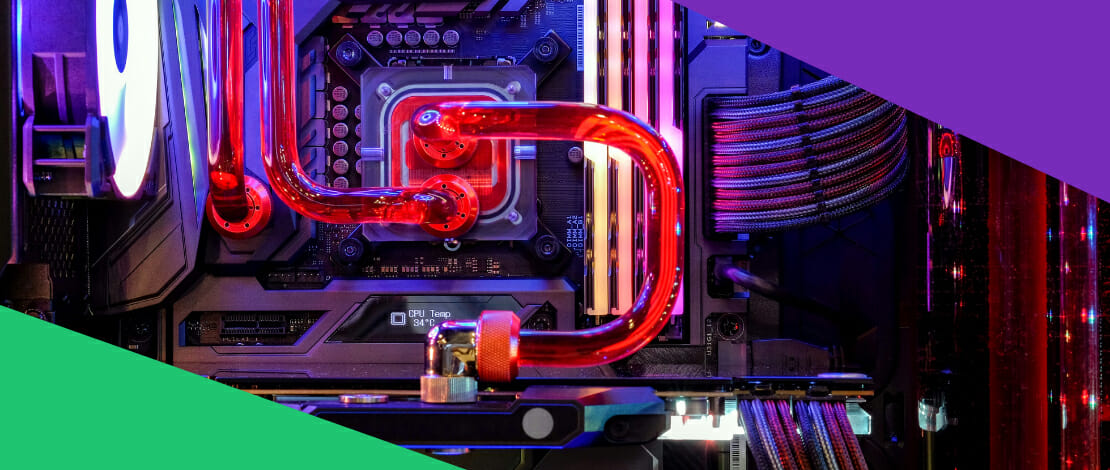Specs on Computer Parts That You Should Ignore

The marketing in the gaming market has become pretty obnoxious to deal with because whenever you look at any gaming component for your build you are bombarded with numbers and specs that might not mean much to you.
If you are also pretty new to the PC scene then these numbers can also be misleading and can encourage you to make a purchase that doesn’t make much sense for your build. To avoid such mistakes let us give you a couple of examples where the specs that companies give you should be ignored.
CPU GHz
The general consensus is that higher frequency on a CPU spec sheet is indicative of better performance right? WRONG. The truth is that unless you are comparing CPUs with the same microarchitecture the comparison of frequency speed is worthless.
You can compare an older CPU like the i7-8700K with a newer Ryzen 5600X and if you would be just looking at GHz then the older Intel chip would be better. In actuality, the 5600X beats the 8700K in all performance parameters because it is built on a newer architecture and can perform more instructions per cycle while being a ton more power-efficient.
The best way to figure out what CPU to get is to look at awesome review articles (self-plug is mandatory) and other extremely informative tech YouTubers (Gamer Nexus) that will present to you usage data from these CPUs in games and other real-world tasks.
The GHz is a lie just like the cake.
GPU MHz
If you thought that GPU producers are somewhat more credible we are here to inform you that the MHz indicated in the spec sheets is also a lie. The same principles and logic apply to GPUs you would want to buy.
Do not simply look at MHz between Nvidia and AMD or between the same manufacturer but different generations of GPUs. This type of comparison will give you nothing in terms of actual performance.
It is even a rule of thumb that higher-end GPUs (like the 3090) sometimes even clock lower in terms of pure MHz (because of all the other computational power they have), but that does not mean they are in any shape or form slower than a mid-range GPU running higher MHz.
Look at real-world benchmarks and reviews or compare GPUs from the same generation, same brand, and with the same microarchitecture!
SSD Read and Write Speeds
Although moving from an HDD to an SSD is an important step, how do you go about upgrading from a lower-tier SSD to a better one? Well, obviously you need to look at the capacity or the GB of the SSD and then look at the write/read speeds right?
Well yes and no. The truth is that once again the capacity and simply the write/read speeds don’t tell you the full story of how good your new purchase would be.
Firstly the MB/s displayed as a number in the spec sheet usually refer to sequential read/write speeds which do not align with what you will most likely be doing on your PC.
For real day-to-day use, you should look at the random performance of the SSD given in IOPS since you won’t be moving huge chunks of data around every time.
Along with this, it is extremely important to look at what kind of DRAM cache (if any) does your SSD have. Without this important element, your SSD might perform like a SATA SSD or an old HDD in certain tasks.
Once again, for a real-world performance rating make sure to read reviews of your desired SSD since that will give you a better picture of what you are putting in your PC.
HDR Support
The biggest scam in terms of spec sheets and the actual product experience has to be the HDR compatibility sticker. HDR or High Dynamic Range is supposed to be a special technology that enhances the quality of the images on your screen giving them extra contrast and color.
This technology has multiple categories but the truth is that unless your monitor is compatible with VESA Standard DisplayHDR 1000, which means your monitor can output 1000 nits brightness, you are not getting anywhere close to HDR.
This high brightness level is necessary to create the contrast between the colors and without this compatibility, it is impossible to truly call your monitor HDR compatible.
Besides the brightness your monitor panel needs to be highly color accurate with at least 90% DCI-P3 accuracy, otherwise once again you will not be seeing what HDR looks like on your screen.
If you are in the market for a gaming monitor you should most likely just forget about HDR altogether since most gaming monitors inherently can’t do HDR because of the focus on the high refresh rate.
If you want a professional-grade monitor, on the other hand, make sure that the monitor spec list does not only say that it is HDR compatible but also has the other necessary specs to run it!